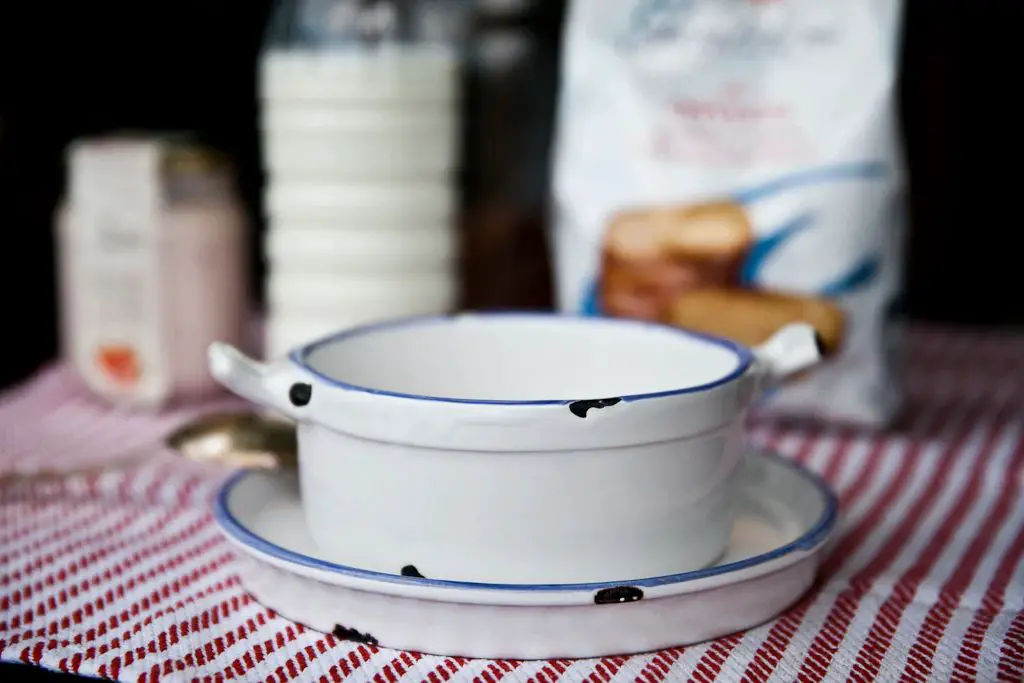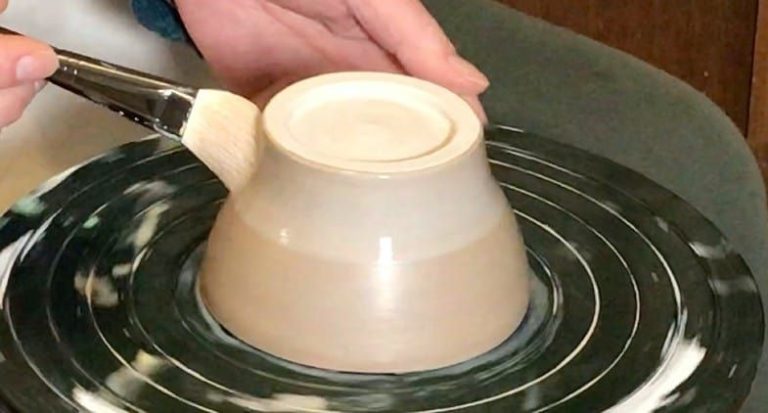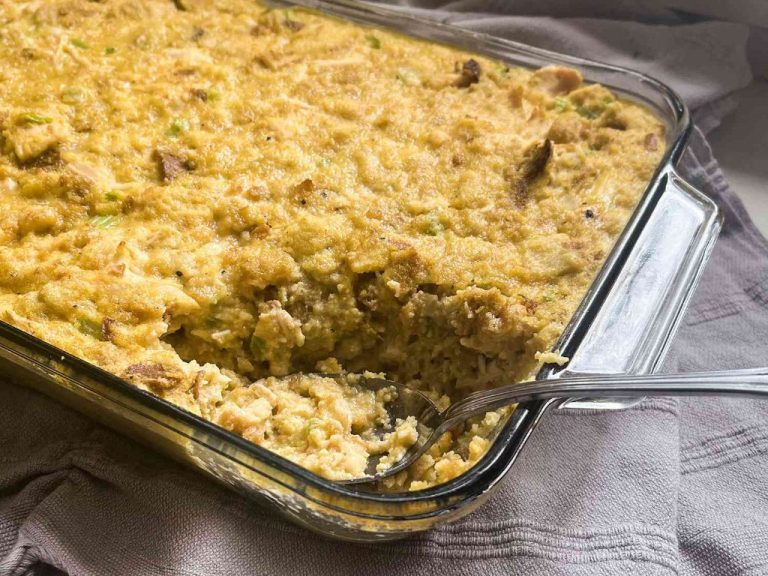Can You Put Porcelain Enamel In The Oven?
What is Porcelain Enamel?
Porcelain enamel is a thin layer of ceramic or glass that is fused to metal surfaces through high heat firing at around 750–850 °C. The enamel bonds with the metal substrate creating a glass-like coating that is smooth, durable, chemical and corrosion resistant [1].
Porcelain enamel can be applied to metals like steel, cast iron, and aluminum. The raw materials for porcelain enamel include feldspar, borax, soda ash, quartz, kaolin, fluorspar, cryolite, and metal oxides. These ingredients are finely ground, mixed and fired onto the metal surface forming a molecular bond [1].
Porcelain enamel has many applications including cookware, appliances, signs, architectural panels, and chemical tanks. It provides a smooth, durable, easy to clean and chemically resistant surface. The glass-like coating resists staining, chipping and wearing for long-lasting protection and aesthetic appeal.
Oven Safety Considerations
When using the oven, it’s important to be aware of the maximum safe temperatures and potential hazards of overheating. Most conventional ovens can reach temperatures of 500-550°F. Exceeding these temperatures can pose fire risks, especially when broiling or grilling. According to the Georgia State Housing, you should never leave cooking food unattended even for a minute, as overheating oils or other ingredients can quickly lead to grease fires in the oven. It’s critical to pay attention to recipes and cooking times and avoid prolonged preheating at extremely high temperatures.
It’s also essential to verify that any cookware or baking dishes are oven-safe before placing them in the oven. Ceramics, plastics, and other materials can melt or leach chemicals when exposed to oven temperatures. Checking for an “oven-safe” rating and following recommended temperature limits will prevent potential hazards. For example, some ceramic or silicone products may only be safe up to 425°F. Exceeding the oven-safe rating can lead to cracking or shattering. According to Electrical Safety First, you should avoid storing items in the oven that may lead someone to unknowingly preheat the oven with items inside.
Porcelain Enamel Oven Safety
Porcelain enamel is known for its heat resistance properties and ability to withstand high temperatures. According to Porcelain Enamel Benefits – Roesch Inc, porcelain enamel coatings are generally able to withstand temperatures up to 1000°F without damage. This makes porcelain enamel well-suited for oven use compared to some other materials.
Porcelain enamel has higher heat resistance than materials like plastic, wood, or standard ceramic. It can withstand much higher temperatures than these alternatives before degrading. However, other oven-safe materials like cast iron or stainless steel may have comparable heat resistance to porcelain enamel in the 500-600°F range commonly used for baking.
Porcelain enamel coatings have to meet certain testing standards related to thermal stress and heat resistance, such as the 150°C thermal shock resistance test. Meeting these standards indicates that porcelain enamel can maintain its integrity when exposed to typical cooking temperatures. Proper testing helps ensure porcelain enamel products are truly oven-safe.
Using Porcelain Enamel in the Oven

When using porcelain enamel cookware in the oven, it’s important to follow some basic guidelines to prevent damage and ensure safety. Porcelain enamel is a type of glass coating bonded to the surface of pots, pans and dutch ovens at extremely high temperatures. This makes it suitable for oven use up to certain temperatures specified by the manufacturer, usually around 400-550°F (1).
To prevent cracking or chipping the enamel, avoid sudden temperature changes by preheating porcelain enamel gradually. Do not put a cool pan directly into a hot oven or place a hot pan on a cold surface. It’s also best to avoid broiling foods in porcelain enamel cookware since extremely high, direct heat can damage the enamel over time (2).
For baked-on messes, fill the pan with warm water and let it soak before scrubbing gently with a soft sponge or cloth. Avoid abrasive scouring pads or cleaners that could scratch the enamel. If needed, a paste of baking soda and water can help lift stubborn residue. Check the manufacturer’s care guidelines since some porcelain enamel can be cleaned with diluted bleach solutions (1).
Look for signs of damage like cracks, chips, bubbles or crazing in the enamel coating. This can allow moisture to reach the underlying cast iron and cause rust. Heavily damaged porcelain enamel cookware is no longer safe for oven use and should be replaced. With proper care and handling, quality porcelain enamel pots and pans can reliably withstand years of oven cooking.
Sources:
(1) https://www.lodgecastiron.com/discover/cleaning-and-care/enameled-cast-iron
(2) https://www.thespruceeats.com/how-to-use-and-care-for-enameled-cast-iron-995760
Advantages of Porcelain Enamel
There are many reasons porcelain enamel cookware is a popular option, especially the non-stick properties, easy cleaning, and longevity.
Porcelain enamel provides an extremely smooth cooking surface that prevents food from sticking. The glass-like coating releases food easily, allowing for effortless cooking and cleaning. Unlike some non-stick surfaces, quality porcelain enamel can handle metal utensils without scratching.
Since food doesn’t stick and residue wipes away, porcelain enamel pots and pans are incredibly easy to clean. A quick scrub with soap and water is all it takes for porcelain enamel cookware to look like new again. The durable, stain-resistant coating ensures the beautiful finish lasts for years.
Porcelain enamel cookware is known for its durability and longevity when properly cared for. The tough glass coating is bonded securely to the metal base at extremely high temperatures. This makes it resistant to chips, cracks, and heavy daily use. With proper use, quality porcelain enamel cookware can last for decades.
With its natural non-stick properties, quick cleanup, and long lifespan, porcelain enamel is an excellent and versatile choice for any kitchen.
Potential Drawbacks
While porcelain enamel cookware offers some advantages, there are a few potential drawbacks to consider as well:
One drawback is the possibility of chipping. The enamel coating can chip if subjected to sharp impacts or abrupt temperature changes. Chipping exposes the underlying metal, which can then rust or corrode over time. Handwashing and avoiding metal utensils can help minimize chipping.
Another potential issue is the heavy weight of some porcelain enamel pieces. Cast iron and ceramic models lined with enamel can be quite heavy, especially larger pots and pans. The thick enamel layer adds weight. This makes porcelain enamel cookware more difficult to maneuver and lift compared to lighter options like stainless steel or aluminum.
Finally, porcelain enamel cookware tends to come with a higher price point. Creating an enamel coating is a complex process requiring high heat, resulting in increased costs. While porcelain enamel pots and pans often provide excellent durability to justify the cost, the upfront price is typically higher than for basic stainless steel or nonstick pans [1].
Porcelain vs. Ceramic Cookware
Porcelain enamel and ceramic cookware have some key differences in terms of their materials and properties:
- Porcelain enamel is made by coating metal (often cast iron or steel) with an impermeable, glasslike enamel coating. Ceramic cookware is made from clay and other natural materials.
- The enamel coating on porcelain enamel makes it very durable and scratch-resistant compared to ceramic. However, ceramic conducts heat more evenly.
- Porcelain enamel can withstand very high temperatures, up to 800°F. Ceramic cookware is generally recommended for lower oven temperatures under 500°F.
- Porcelain enamel cookware is often heavier than ceramic. The enamel coating improves heat retention.
- Uncoated ceramic cookware is considered non-stick when seasoned properly. Porcelain enamel is naturally non-stick.
- Porcelain enamel can chip over time with improper use or care. Ceramic cookware may become damaged if subjected to rapid temperature changes.
In summary, porcelain enamel offers excellent durability for high-heat cooking but can be heavy. Ceramic cookware provides good heat conduction if used properly but requires more care. Consider your cooking needs and preferences when choosing between the two.
Other Oven-Safe Options
In addition to porcelain enamel, there are several other cookware materials that can safely withstand high oven temperatures. Some popular oven-safe alternatives include:
Cast Iron
Cast iron is one of the most durable and oven-safe materials for cookware. It distributes heat evenly and can withstand temperatures well above 500°F. According to this source, cast iron is a great option for searing, baking, broiling, and roasting.
Stainless Steel
Stainless steel is another very oven-safe material, with heat tolerance ranging from 400-600°F depending on the quality. According to this review, stainless steel maintains temperature control well and is durable and non-reactive.
Glass
Glass baking dishes and cookware can typically handle temperatures up to 500°F. Glass evenly distributes heat and allows you to monitor your food as it cooks. According to this roundup, glass works well for baking and roasting.
Stoneware
Stoneware made for the oven is very durable at high temperatures. It retains heat well for consistent baking. Just check specifications, as quality can vary. Stoneware casserole dishes and roasting pans are very useful for oven cooking.
Cookware Maintenance
Properly caring for porcelain enamel cookware can help it last for years. Here are some tips for cleaning, storing, and identifying signs of wear on porcelain enamel pans and pots:
For cleaning, avoid abrasive scouring pads which can scratch the enamel surface over time. Instead, let cookware soak in warm, soapy water to loosen any stuck-on food. Use a soft sponge or brush to gently clean the pan. Rinse thoroughly after washing. According to All-Clad [1], porcelain enamel cookware is generally dishwasher safe, but hand washing is recommended to preserve the finish.
When storing porcelain enamel cookware, avoid stacking pans directly inside one another. This can lead to chipping or scratching. Hang cookware or place on open shelves. Great Jones [2] recommends lining pots with paper towels before stacking to prevent scratches.
Check enamel pans periodically for signs of wear like scratches, chips, cracks or crazing (fine cracks). Heavily stained or worn enamel may indicate a loss of protective coating. Avoid metal utensils and high heat to prevent further damage. Severely damaged cookware should be replaced.
Summary
To recap, porcelain enamel cookware is generally safe to use in the oven. Porcelain enamel is a type of glass coating applied to metals like cast iron or steel to produce a smooth, durable, non-stick surface. The enamel bonds with the metal at high temperatures during manufacturing, creating a surface that can withstand oven temperatures up to 500-550°F.
Porcelain enamel pots and pans should be inspected for chips or cracks before oven use. It’s also important to avoid sudden temperature changes that could damage the enamel. Allow plenty of time for preheating and gradual cooling. Only use porcelain enamel that is specifically oven-rated by the manufacturer.
With proper care, porcelain enamel provides excellent non-stick performance and even heating for oven baking and roasting. The glass-like surface is both durable and easy to clean. Just avoid metal utensils or abrasive scrubbing that could damage the finish over time.
In summary, porcelain enamel makes an ideal choice for oven-to-table bakeware with the right safety precautions and handling. It can provide many of the benefits of ceramic with the durability of seasoned cast iron.




